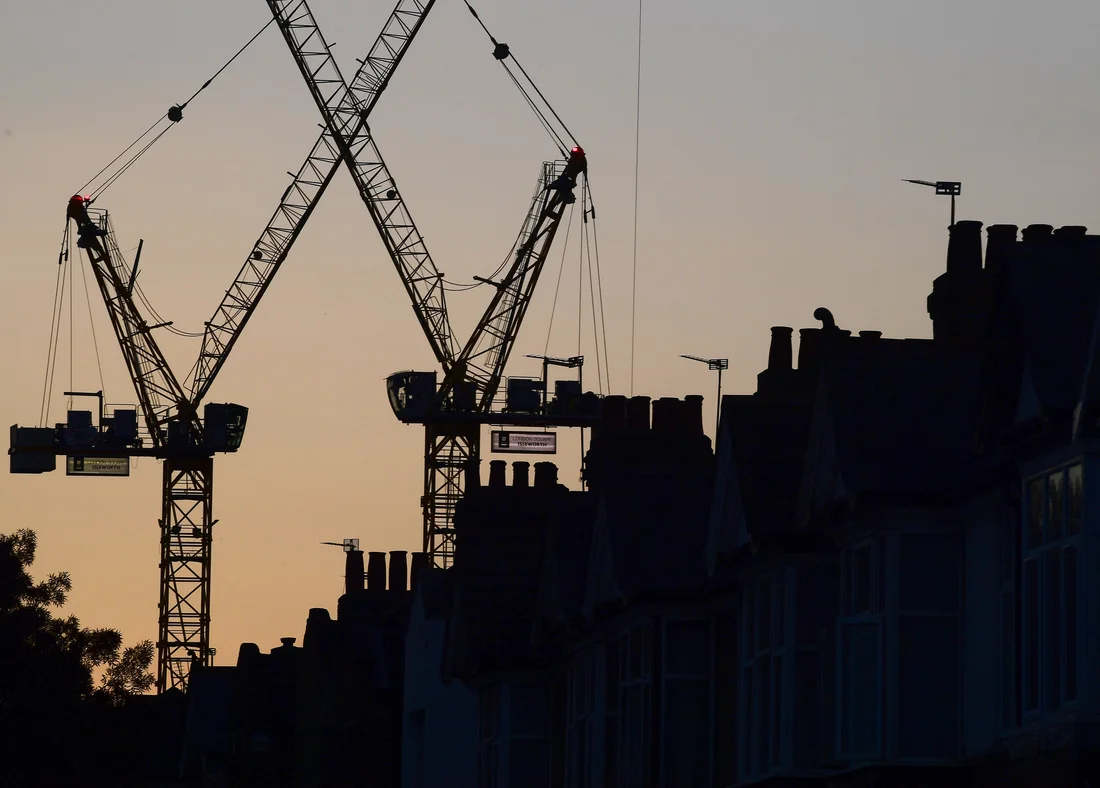Britain’s construction sector recorded its fastest growth in nearly two-and-a-half years this September, driven by a sharp rise in civil engineering projects and a recovery in house-building. However, a significant surge in costs for construction firms has raised concerns, according to a recent industry survey released on Friday.
Table of Contents
Growth Driven by Civil Engineering and Housing Construction
The S&P Global/CIPS UK Construction Purchasing Managers’ Index (PMI) rose to 57.2 in September, the highest level since April 2022, compared to 53.6 in August. This surpassed economists’ forecasts, which had expected a more modest rise to 53.3, according to a Reuters poll. The growth was bolstered by strong pipelines of infrastructure work, especially in the civil engineering and housing sectors.
Tim Moore, Economics Director at S&P Global Market Intelligence, attributed this surge to “a combination of lower interest rates, domestic economic stability, and a steady flow of infrastructure projects.” He emphasized that many firms have experienced rising sales inquiries since the landslide victory of Prime Minister Keir Starmer’s Labour Party in July’s general election.
Lower Borrowing Costs Boost Activity
Construction firms reported that lower borrowing costs, coupled with political stability, helped fuel the recent growth. The Bank of England’s decision to keep interest rates steady at 5% in September, after a rate cut in August, has made financing for construction projects more accessible. The central bank is expected to further reduce rates in November, signaling a more favorable environment for the construction sector.
Andrew Bailey, Governor of the Bank of England, recently indicated that the bank might take a more aggressive approach to reducing interest rates if inflation continues to ease. The expectation of continued rate cuts has provided further optimism for firms in the sector.
Infrastructure Projects Leading the Charge
The PMI report highlighted that civil engineering projects were a key driver of the construction sector’s growth, with the sub-index for civil engineering reaching its highest point since June 2021. This boom is largely attributed to infrastructure projects related to energy security and renewable energy sources, reflecting the UK government’s push for green and sustainable development.
Housing construction also saw a significant uptick, expanding at the fastest rate in 30 months. The commercial building sector followed closely, achieving its strongest growth since May. These sectors are benefiting from strong demand for new housing and commercial spaces as the economy continues to recover.
Cost Pressures Cast a Shadow on Optimism
Despite the positive growth figures, construction firms are facing rising input costs, which are beginning to squeeze profit margins. The PMI’s measure of input prices showed the steepest increase in 16 months, driven by higher raw material costs. This inflationary pressure is a concern for the sector, especially as firms brace for potential changes in government policy.
Business optimism took a hit in September, with the PMI’s gauge of confidence dropping to a five-month low. Many companies are worried about potential cutbacks to major public sector projects and uncertainty surrounding the upcoming budget statement from Finance Minister Rachel Reeves. Set to be delivered on October 30, Reeves’ inaugural budget may include tax increases, which could impact public spending on large-scale infrastructure projects.
Reeves has already warned of potential tax hikes as the new government seeks to improve public services and bolster investments. This has created uncertainty among construction firms, particularly those reliant on government contracts.
The Road Ahead for UK Construction
While the PMI report signals robust growth in the construction sector, particularly in civil engineering and housing, the rising costs of materials and potential government cutbacks present challenges. The sector’s outlook remains cautiously optimistic as firms hope for continued support through lower interest rates and favorable government policies.
The broader UK economy also saw growth in September, though at a slower pace. The all-sector PMI, which combines services, manufacturing, and construction, fell to 53.0 from 53.8 in August. While the decline indicates slower growth, the figure remains above the critical 50.0 mark, indicating that the overall economy continues to expand.
As the UK navigates through post-election political changes and potential fiscal adjustments, the construction sector will be closely watching developments in government policy and inflation to assess their impact on future growth.




